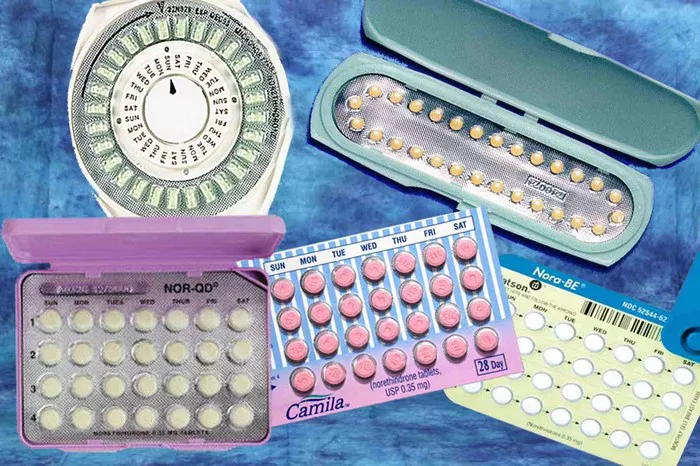Stroke, a leading cause of disability worldwide, not only affects physical health but also has profound implications on mental well-being. Post-stroke depression (PSD) is a prevalent yet often overlooked complication, impacting up to one-third of stroke survivors. The debilitating effects of PSD can hinder recovery and diminish the quality of life for those affected. In addressing this critical issue, finding the most effective antidepressant for stroke patients becomes paramount. This article explores the nuances of PSD, delves into the challenges of selecting antidepressants in this population, and identifies the best options available to unlock hope and facilitate meaningful recovery.
Understanding Post-Stroke Depression:
Post-stroke depression is a multifaceted condition that emerges following a stroke, affecting individuals irrespective of age, gender, or stroke severity. While the exact mechanisms underlying PSD are not fully understood, various factors contribute to its development, including biological, psychological, and social determinants. Neurotransmitter imbalances, structural brain changes, and psychosocial stressors all play pivotal roles in the onset and progression of PSD.
The consequences of PSD are far-reaching, exacerbating physical disability, impeding rehabilitation efforts, and increasing the risk of mortality. Furthermore, PSD often goes undiagnosed or untreated, further compounding its detrimental effects. Recognizing the signs and symptoms of PSD is essential for timely intervention and improved outcomes.
Challenges in Antidepressant Selection:
Choosing the appropriate antidepressant for stroke patients presents unique challenges. Stroke survivors may exhibit altered pharmacokinetics and pharmacodynamics, necessitating careful consideration of drug metabolism and potential interactions with other medications. Moreover, the presence of comorbidities such as cognitive impairment, cardiovascular disease, and disability adds complexity to treatment decisions.
Traditional antidepressants, including selective serotonin reuptake inhibitors (SSRIs) and tricyclic antidepressants (TCAs), are commonly prescribed for PSD. However, their efficacy and safety profiles in stroke patients warrant scrutiny. SSRIs, while generally well-tolerated, may pose a risk of bleeding, particularly in individuals with a history of stroke. TCAs, on the other hand, carry a higher burden of side effects, including anticholinergic effects and cardiovascular complications, which may limit their utility in this population.
Emerging Evidence and Promising Alternatives:
Despite these challenges, emerging evidence suggests several promising alternatives for the treatment of PSD. Novel antidepressants, such as serotonin-norepinephrine reuptake inhibitors (SNRIs) and noradrenergic and specific serotonergic antidepressants (NaSSAs), offer distinct mechanisms of action and may provide greater efficacy and tolerability in stroke patients.
Among SNRIs, duloxetine has garnered attention for its dual inhibition of serotonin and norepinephrine reuptake, offering potential benefits in alleviating depressive symptoms and improving functional outcomes in stroke survivors. Similarly, mirtazapine, a NaSSA with antagonistic effects on serotonin receptors, has shown promise in mitigating depression and enhancing neuroplasticity following stroke.
Furthermore, non-pharmacological interventions, including cognitive-behavioral therapy (CBT), mindfulness-based stress reduction (MBSR), and physical exercise, play integral roles in the management of PSD. These modalities, either alone or in combination with antidepressant therapy, address the multifaceted nature of depression and promote holistic recovery in stroke patients.
Navigating Treatment Strategies:
In navigating treatment strategies for PSD, a personalized approach tailored to the individual needs and preferences of stroke patients is paramount. Clinicians must consider the severity of depression, associated symptoms, medical comorbidities, and potential drug interactions when selecting antidepressants. Collaborative decision-making involving patients, caregivers, and healthcare providers facilitates shared goals and fosters a supportive care environment.
Regular monitoring of depressive symptoms, functional status, and medication adherence is essential to track treatment response and optimize outcomes. Close communication between healthcare professionals across disciplines, including neurology, psychiatry, and rehabilitation, ensures comprehensive care and continuity throughout the recovery journey.
Conclusion:
Post-stroke depression poses significant challenges to stroke survivors, impeding recovery and diminishing quality of life. The selection of antidepressants in this population requires careful consideration of efficacy, safety, and tolerability, amidst the backdrop of complex medical and psychosocial factors. While traditional antidepressants remain cornerstone treatments for PSD, emerging evidence supports the use of novel agents and non-pharmacological interventions to address this debilitating condition.
By adopting a holistic approach that integrates pharmacotherapy, psychotherapy, and rehabilitative strategies, healthcare providers can unlock hope and facilitate meaningful recovery for stroke patients with depression. Through ongoing research, education, and advocacy efforts, we can strive towards better outcomes and improved quality of life for those affected by PSD. Together, we can illuminate the path to healing and resilience in the aftermath of stroke.
FAQs
Q1: What are the best antidepressants for the elderly?
The best antidepressants for the elderly often include selective serotonin reuptake inhibitors (SSRIs) like sertraline and escitalopram, as they tend to have fewer side effects and drug interactions compared to other classes. SSRIs are generally well-tolerated and effective for elderly patients with depression.
Q2: Which antidepressant should be avoided in the elderly?
Tricyclic antidepressants (TCAs) such as amitriptyline should be avoided in the elderly due to their higher risk of side effects such as sedation, orthostatic hypotension, and cardiac effects. Additionally, TCAs have a higher potential for drug interactions compared to newer antidepressants.
Q3: What is the first line antidepressant for the elderly?
For the elderly, the first-line antidepressant often recommended is sertraline, an SSRI. Sertraline has been extensively studied in older adults and has shown efficacy in treating depression while maintaining a favorable side effect profile and lower risk of interactions with other medications commonly used by the elderly.
Related topics:
- Major Depression: Can It Be Cured?
- The Benefits of Counseling for Anxiety: A Comprehensive Exploration
- Is Retroactive Jealousy OCD Real?


